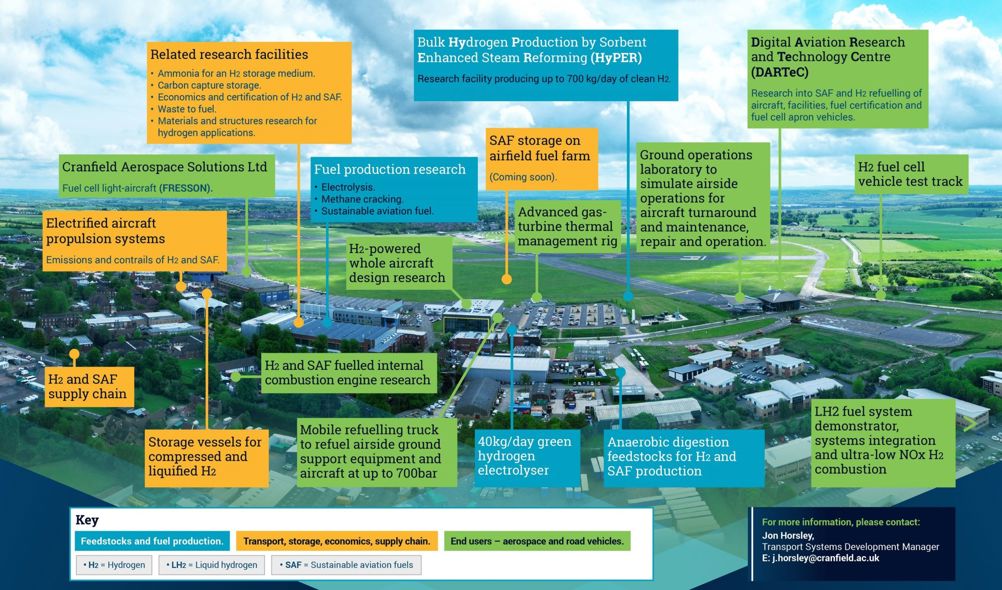The funding - the largest sum the university has ever received - will be used to create the Cranfield Hydrogen Integration Incubator (CH2i), a brand new facility that will aim to scale up hydrogen aviation. Cranfield has long been at the forefront of H2 aviation research, with hydrogen production, transport, storage and use all studied on the campus. CH2i will seek to connect the various strands across the campus, expanding existing facilities and supporting R&D across the whole supply chain.
Related content
“This game-changing investment builds on Cranfield’s expertise in hydrogen research and will help the aviation industry to make the leap to using hydrogen,” Professor Karen Holford, Cranfield’s chief executive and vice-chancellor said in a statement.
“CH2i will integrate with other large industry research areas at Cranfield including our novel hydrogen production programmes and our Aerospace Integration Research Centre and the Digital Aviation Research and Technology Centre. Working with research and industry partners nationally and internationally, we will unlock some of the most significant technical challenges around the future development and deployment of hydrogen in aviation. It’s a very exciting prospect for our researchers, partners and for the aviation industry. It will help to build the pathway to net zero emissions aviation.”

As the only university in Europe with its own airport, Cranfield is well positioned to play a role in shaping the future of aviation. Alongside a range of facilities to explore the hydrogen supply chain, the controlled airside environment can be used to test new technologies, systems and processes at scale. One of CH2i’s key infrastructure elements will be expanding Cranfield’s Airport for H2 operations.
The three large infrastructure elements of CH2i are:
- Hydrogen Integration Research Centre – extending an existing facility, this will include new labs for advanced materials synthesis and testing for hydrogen-based technologies, analytical laboratories and a dedicated innovation area to develop next generation hydrogen pilot plant demonstration, electrolysis, catalyst development and green hydrogen.
- Enabling Hydrogen Innovation (Test Area) - investment into two separate test bed facilities, able to support hydrogen and liquid hydrogen activity, fuel systems, storage and propulsion system integration at mid- and high-technology readiness levels.
- Development of Cranfield Airport’s infrastructure, increasing its capability for safe operation and testing of future demonstrator hydrogen-powered aviation.
“A key part of this initiative is achieving rapid innovation within a regulated, safety-critical context,” said Professor Leon A Terry, pro-vice chancellor for Research and Innovation at Cranfield.
“Cranfield has existing expertise in the production, storage and use of hydrogen in an industrial context, and a track record of building near-industrial scale facilities. This funding heralds a transformation in the hydrogen research trajectory, and our unique expertise and facilities puts Cranfield right at the centre of accelerating hydrogen development in the UK.”











McMurtry Spéirling defies gravity using fan downforce
Ground effect fans were banned from competitive motorsport from the end of the 1978 season following the introduction of Gordon Murray's Brabham...